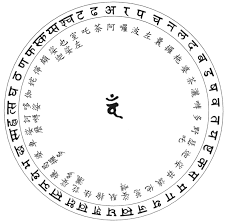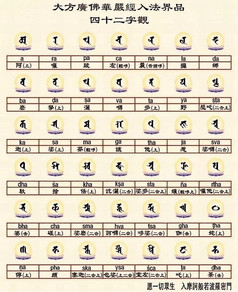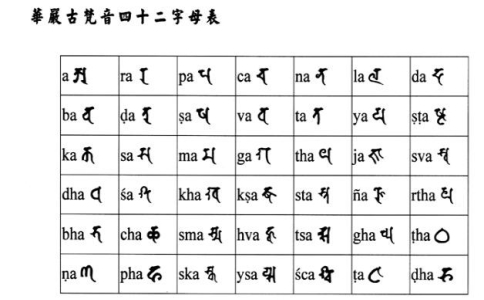The Secret of Phonetics: Kumarajiva's Linguistic Legacy and Its Impact on Chinese Buddhism
- 山水闲人Jane

- Jul 2, 2024
- 7 min read
拼音的秘密:鸠摩罗什的语言遗产及其对中国佛教的影响
Kumārajīva was a significant translator and scholar in the history of Buddhism. His contributions not only in translating Buddhist scriptures but also in the field of linguistics had a profound impact on Chinese culture. This article explores Kumārajīva’s achievements and his contributions to Chinese characters and Buddhist translations.
鸠摩罗什法师是佛教历史上一位极其重要的翻译家和学者。他不仅在翻译佛经方面做出了卓越贡献,还在语言学方面对中国文化产生了深远影响。本文将详细探讨鸠摩罗什法师的成就及其对中国文字和佛教翻译的贡献。
Life and Achievements of Kumārajīva生平事迹
Kumārajīva (344-413 CE) was born into a noble family in Kucha (present-day Xinjiang, China), with his father Kumāraya being of Indian noble descent and his mother a local princess. At the age of seven, Kumārajīva entered monastic life with his mother and initially studied Hinayana Buddhism. Later, he traveled to various regions such as Kapiśa (modern-day Kashmir) and Śrīvijaya (in present-day Tajikistan), where he encountered prominent Mahayana Buddhist monks from the kingdom of Shache (modern-day Yarkand). Inspired by these encounters, he switched his focus to Mahayana Buddhism.
During his extensive travels, Kumārajīva became renowned across Western regions and his fame reached China. In 382 CE, during the reign of Fu Jian of Former Qin, Kumārajīva was taken captive to Liangzhou (in modern-day Gansu Province) after the Former Qin army invaded the region of Yanqi (in modern-day Xinjiang). After the downfall of Former Qin and the rise of Later Qin under Yao Chang, Kumārajīva remained in Liangzhou under the control of the warlord Lu Guang for about sixteen to seventeen years.
In 401 CE, Yao Xing, the ruler of Later Qin, launched a campaign against Later Liang and personally invited Kumārajīva to Chang'an (present-day Xi'an). He was honored as a national teacher and Yao Xing organized a large-scale translation bureau in Chang'an, appointing Kumārajīva to oversee the translation of Buddhist scriptures. Over the next decade, Kumārajīva devoted himself wholeheartedly to translating scriptures and expounding Buddhist teachings.
鸠摩罗什(344-413年),其父鸠摩罗炎出身于印度的望族,后移居龟兹(今新疆库车县),母亲是当地的公主。鸠摩罗什7岁时随母亲出家,最初学习小乘佛教,后来前往罽宾(今克什米尔地区)和沙勒(今塔吉克斯坦)等地,遇到莎车国的大乘名僧,转而学习大乘佛教。他博览大小乘经典,名声远播西域各国,在汉地也有传闻。
前秦建元十八年(382年),苻坚派遣吕光攻打焉耆(今新疆焉耆县),随后又攻灭龟兹,将鸠摩罗什劫持到凉州(三年后姚苌杀苻坚,灭前秦,吕光割据凉州)。鸠摩罗什在凉州滞留了十六、七年。
后秦弘始三年(401年),姚兴攻打后凉,亲自迎接鸠摩罗什到长安,并以国师之礼待之。在长安,姚兴组织了规模宏大的译经场,请鸠摩罗什主持译经事业。此后十余年间,鸠摩罗什悉心从事译经和说法。
Learning Chinese学习中文的过程
Upon arriving in China, Kumārajīva faced the daunting task of learning and mastering Chinese. As a foreigner, he had to translate complex Buddhist scriptures from Sanskrit or Pali into Chinese, a challenging task for anyone. To overcome this, Kumārajīva dedicated himself to learning Chinese and quickly mastered it due to his remarkable intelligence and wisdom. He found that the Chinese writing system was extraordinarily complex, lacking phonetic alphabets and entirely different from any language system he had known.
鸠摩罗什法师来到中国时,面临的一个巨大挑战是学习和掌握中文。作为一个外国人,他需要将复杂的佛教经典从梵文或巴利文翻译成中文,这对任何人来说都是一项艰巨的任务。为了克服这个困难,鸠摩罗什法师全心投入学习中文。他发现汉字系统极其复杂,没有拼音和字母,完全不同于他所熟悉的语言体系。
Creating a Phonetic System创立注音字母
To effectively carry out his translation work, Kumārajīva developed a phonetic system. He used the Huayan (Avataṃsaka) letters as a foundation to create a method that helped in learning and remembering Chinese pronunciations. This phonetic system later evolved into the precursor of modern Chinese pinyin and zhuyin (bopomofo) systems.
为了有效地进行翻译工作,鸠摩罗什法师创造了一套注音系统。他利用华严字母作为基础,创建了一种帮助学习和记忆汉字发音的方法。这种注音系统后来演变为现代汉语拼音和注音符号的前身。
Application of Huayan Letters华严字母的应用
Huayan letters are a unique set of characters based on the Buddhist text "Avataṃsaka Sūtra," possessing distinct phonetic and symbolic significance. Kumārajīva used this system to create a method that facilitated foreigners in learning Chinese pronunciation. This method not only addressed pronunciation issues in translations but also laid the groundwork for later phonetic systems in Chinese.
华严字母是一种基于佛教《华严经》的文字体系,具有独特的音韵和象征意义。鸠摩罗什法师通过这种字母体系,创造出了一种可以帮助外国人学习汉字发音的方法。这种方法不仅解决了翻译中的发音问题,还为后来的汉语拼音系统奠定了基础。
Fanqie Phonetic Notation反切注音法
In ancient China, the fanqie method was commonly used in dictionaries to indicate pronunciation. Fanqie is an ancient phonetic system that uses two Chinese characters to represent the pronunciation of another character. Kumārajīva widely applied this method in his translation work to accurately translate foreign scriptures into Chinese.
在中国古代,字典中常用反切法来注音。反切是一种古老的注音方法,通过两个汉字的发音拼合来标示一个汉字的读音。鸠摩罗什法师在他的翻译工作中广泛应用了这种方法,帮助他准确地将外文经典翻译成中文。
Historical Development of Fanqie反切的历史演变
The fanqie method gained widespread use during the Sui and Tang dynasties. During Emperor Yang of Sui’s reign, the term "fan" (反) was replaced with "qie" (切) for political reasons, but the method persisted, remaining a standard phonetic notation in traditional dictionaries. This method involves combining the initial consonant of one character with the final part of another character to indicate the pronunciation of a third character, greatly facilitating the reading and learning of texts.
反切注音法在隋唐时期得到了广泛应用。隋炀帝时期,出于政治原因,将“反”字改为“切”字,但这种注音方法一直保留到后来,成为传统字典中常见的注音方式。这种方法通过两个汉字的拼音组合,标示出一个汉字的读音,极大地方便了文献的阅读和学习。
Achievements in Translating Buddhist Scriptures 翻译佛经的成就
Kumārajīva translated numerous important Buddhist texts into Chinese. His translations are renowned for their fluency and profound understanding, becoming essential texts for Buddhist study and practice. Kumārajīva’s work not only preserved the essence of the original texts but also made them more accessible and understandable.
鸠摩罗什法师在中国翻译了大量佛教经典,他的翻译作品以其流畅的文字和深刻的理解力而著称,成为后世佛教徒学习和修行的重要文本。鸠摩罗什法师的翻译不仅保留了原文的精髓,还使其更易于理解和传播。
From the third to the eleventh year of the Hongshi era (401-409 CE), Kumārajīva and his disciples translated numerous Buddhist scriptures and treatises into Chinese. Among his notable translations are the Mahāprajñāpāramitā Sūtra, Lotus Sūtra, Vimalakīrti Sūtra, Amitābha Sūtra, and the Diamond Sūtra, as well as treatises like the Madhyamaka Śāstra, Śataśāstra, Dvādaśa-dvāra-śāstra, Mahāprajñāpāramitopadeśa, and Sarvāstivāda Abhidharma. Estimates vary regarding the total number of texts translated by Kumārajīva, with sources like the Catalogue of the Tripitaka from the Tang Dynasty recording thirty-five collections totaling 294 scrolls, while the Record of the Buddhist Teachings of the Kaiyuan Era lists seventy-four collections totaling 384 scrolls.
鸠摩罗什与弟子在弘始三年至十一年间,译出了《大品般若经》《妙法莲华经》《维摩诘经》《阿弥陀经》《金刚经》等经典和《中论》《百论》《十二门论》《大智度论》《成实论》等论著,系统地介绍了龙树中观学派的学说。关于鸠摩罗什的译经总数有不同说法,根据《出三藏记集》为三十五部二百九十四卷;《开元释教录》则记载为七十四部三百八十四卷。
Kumārajīva’s translations were celebrated for their clarity, fidelity to the original texts, and literary style, marking a significant milestone in the history of Chinese Buddhist translation. His works not only preserved the essence of Buddhist teachings but also facilitated their wider dissemination and understanding in China.
鸠摩罗什的译文文义圆通、内容信实、字句流畅,在中国译经史上具有划时代的意义。他的翻译作品不仅保留了原文的精髓,还使其更易于理解和传播,对中国佛教的发展产生了深远影响。
Far-reaching Influence影响深远
Kumārajīva’s translation efforts had a significant impact on Chinese culture. By introducing a large number of Buddhist scriptures to China, he promoted the spread and development of Buddhism. His translation style, characterized by its beauty and depth, also influenced Chinese literature and thought.
鸠摩罗什法师的翻译工作对中国文化产生了深远影响。他将大量佛教经典带入中国,促进了佛教在中国的传播和发展。他的译文风格优美,内容深刻,对中国文学和思想也产生了重要影响。
Kumārajīva was not only an outstanding Buddhist translator but also a great linguist and cultural transmitter. By creating a phonetic system and widely applying the fanqie method, he solved pronunciation issues in Buddhist translations, laying the foundation for later phonetic systems in Chinese. Kumārajīva’s contributions make him an indispensable figure in the history of Chinese Buddhism, and his wisdom and scholarship have influenced Chinese culture for over a millennium. His translated works, such as the "Diamond Sūtra" and the "Vimalakīrti Sūtra," are still revered and studied by Buddhists today. Kumārajīva’s spirit and wisdom will forever be etched in the history of Chinese Buddhism and culture.
鸠摩罗什法师不仅是一位卓越的佛教译经师,还是一位伟大的语言学家和文化传播者。他通过创造注音系统和广泛应用反切法,解决了佛经翻译中的发音问题,为后来的汉语拼音系统奠定了基础。鸠摩罗什法师的贡献使他成为中国佛教史上一位不可忽视的重要人物,他的智慧和学问影响了中国文化长达一两千年。他的翻译作品,如《金刚经》和《维摩经》,至今仍为佛教徒所尊崇和学习。鸠摩罗什法师的精神和智慧,将永远铭刻在中国佛教和文化的历史中。













Comentários